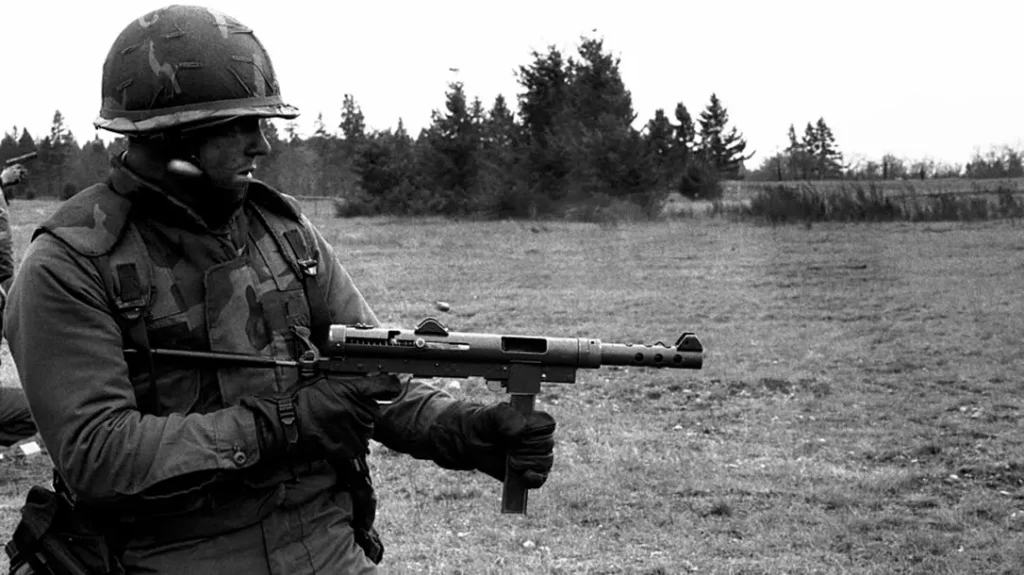Few companies have the legacy brand recognition that Smith & Wesson enjoys. They are as big a part of Americana as apple pie. Their reach spans from cowboy guns to modern duty-use weapons. But did you know that at one time S&W made a submachine gun? Here is the story of the historic Model 76.
The Model 76 – The Smith & Wesson Submachine Gun
The history of the Model 76 submachine gun began in April 1966, when Smith & Wesson’s Washington, D.C., sales representative received a call from the US Navy Department, which asked whether Smith & Wesson would be interested in designing and producing a 9mm submachine gun. The US Navy needed a submachine gun for its SEAL special operations team in Vietnam. The SEALs’ weapon of choice was the Swedish Carl Gustaf m/45―a well-made and reliable submachine gun.
Advertisement — Continue Reading Below
Because Sweden was a neutral country, a problem arose; they objected to their product being used in a war zone. Therefore, the supply of the Carl Gustaf m/45 to the US Navy was cut off, forcing them to find another submachine gun to replace it.

Design Requirements
Although they appear similar, the M76 was designed from the ground up to meet a set of requirements provided by the US Navy SEALs. This included:
Advertisement — Continue Reading Below
- Reliability
- Rugged design
- Selective Fire: safe—semi-automatic—full auto
- Cost-effective
- Ease of maintenance: disassembly—cleaning―reassembly
- Magazine capacity of 36 rounds
- Cyclic rate between 600 and 800 rounds per minute preferred.
It was from this list that the M76 was created. According to the Director of Research and Development and head of the Model 76 project at the time, Dwayne W. Charron, was quoted as saying, “[He] had never seen, held or fired a Swedish K before starting design work on the M76…”. The M76 fires 9mm rounds; the Carl Gustaf m/45 has an open bolt design and also fires 9×19mm Parabellum ammunition.
Suppressers
The SEALs also requested a limited number of suppressors for the M76. These suppressors were to be used under certain situations to reduce the gun’s sound and hide the flash so there would be no point of reference for return fire. Being an open bolt system, some sound would always be emitted, but the muzzle flash could be eliminated.
Advertisement — Continue Reading Below
Due to the ongoing war and a critical need to fill, Smith & Wesson designated the M76 a top-priority project. The total time to bring the M76 concept from the drawing board to production was just 9 months. Many people comment that the gun is ugly or rough. Due to the urgency at the time, the M76 skipped the finishing department where welds and rough edges would usually be smoothed.

The Model 76
While the gun saw action in Vietnam, weak market demand forced Smith & Wesson to cease production of the M76 in 1974. The M76 is now a highly collectible item in the NFA market. These classic guns regularly sell in the $20,000.00 price range. While this may be out of your price range, it would still be a nice piece of history to own.
Advertisement — Continue Reading Below
WHY OUR ARTICLES/REVIEWS DO NOT HAVE AFFILIATE LINKS
Affiliate links create a financial incentive for writers to promote certain products, which can lead to biased recommendations. This blurs the line between genuine advice and marketing, reducing trust in the content.


